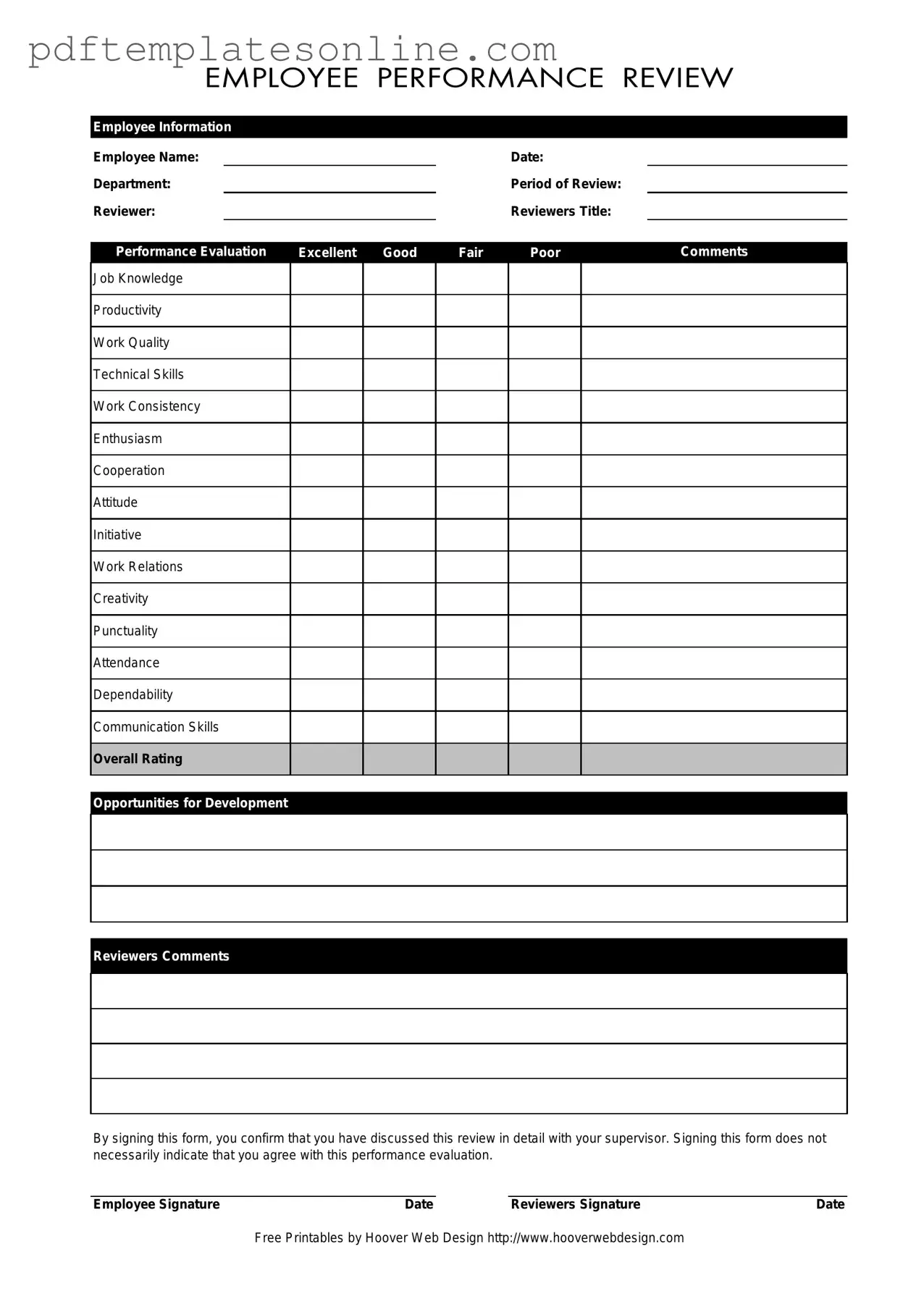Filling out the Employee form can be straightforward, but many people make common mistakes that can lead to confusion or miscommunication. One frequent error is leaving out critical information. For example, not including the Employee Name or Date can delay the review process and create unnecessary complications.
Another mistake is not providing accurate ratings in the performance evaluation section. Each category, such as Job Knowledge or Work Quality, requires careful consideration. Ratings that do not reflect true performance can mislead supervisors and affect future evaluations.
Many individuals also forget to add comments that support their ratings. Comments are essential for clarifying why a specific rating was given. Without these explanations, the evaluation may seem arbitrary and leave room for misunderstanding.
Additionally, people often neglect to sign the form. The signature confirms that the employee has discussed the review with their supervisor. Failing to sign can lead to questions about whether the evaluation was completed properly.
Another common oversight is not reviewing the form before submission. Errors in spelling, grammar, or numerical ratings can undermine the professionalism of the evaluation. Taking a moment to proofread can prevent these issues.
Some individuals may also misinterpret the section on Opportunities for Development. This area should reflect constructive feedback, not just a list of shortcomings. Clear and actionable suggestions can help employees improve and grow.
Finally, it is essential to ensure that all necessary signatures are obtained. Both the employee and the reviewer must sign the form to validate the evaluation process. Missing signatures can create discrepancies and lead to further complications.
